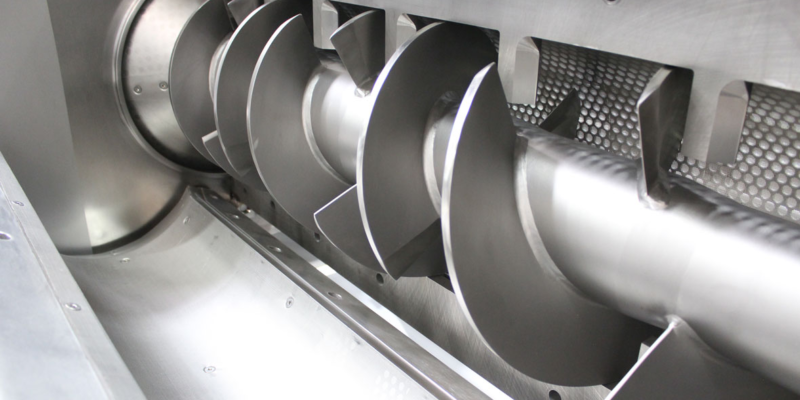Solids and liquids are separated using a screw press. An alternative to belt presses and filter papers is the screw press.
It is a slow-moving device that dewaters via continual gravity drainage. Screw presses are frequently employed for difficult-to-press materials, for instance, those that tend to clump together. The screw press compresses the material against a screen/ filter; the liquid is collected and used via the screen.
Food processing, paper and pulp industries, sewage disposal, and other industries commonly use dewatering screw presses. Industries usually purchase this machine in bulk from a Dewater Screw Press Wholesaler. Buying in bulk is relatively cost-effective. This separation equipment is a good investment.
Principle of a Dewatering screw press
The Dewatering Screw Press uses the screw extrusion concept. The sludge is compressed and dewatered by intense extrusion force. Due to the changing screw diameter, pitch, and space between stationary and moving rings.
The sludge pump lifts the sludge to the mixing tank whenever the Dewatering Screw Press is in operation. At this point, the dosing pump also transfers the liquid quantitatively to a mixing tank. Then the stirring motor drives the complete mixing system to blend the sludge and the liquid.
So when the liquid level reaches the top level of the liquid level sensor, the liquid level sensor receives a signal. Sludge is then pressed and filtered by the motor of the screw press’s main body. The screw shaft gradually raises the sludge to the sludge exit. Then the filtrate runs out via the gap between the fixed and moving rings.
Screw Press
A stationary ring, a rotating ring, a screw, a screw shaft, a gasket, and various connecting plates make up the screw press. Each screw press body is made entirely of stainless steel 304. Six screws secure the fixed ring together.
There is a moving ring and a gasket between the fixed and moving rings. Both the fixed and moving rings are composed of wear-resistant materials, extending the life of the entire machine. The screw shaft goes through both the fixed and movable rings.
Capacity
However, the material determines the specifics of a screw press’s design. The designs, screw speeds, screens for optimal outlet uniformity, and a great capture rate differ depending on the material.
Typically screw presses are intended to feed material with a water content of 40-60%. The screw press’s length and diameter ratio are also affected by the material—the capacity range of a screw press.
Drive
Smaller presses utilize a hollow-shaft gearbox, whereas larger presses use a foot-mounted gearbox. Electric motors are now used to drive practically all presses due to their dependability and cheap cost frequency drives. The previously standard hydraulic motor drives were replaced with electric motors. Vertical designs were popular in the 1800s but are no longer manufactured.
The screws in most screw presses are now installed horizontally. An angled screw design is used in one recent variant to decrease floor footprint and press cake moisture.
Conclusion
A Dewatering Screw Press Wholesaler will provide the right equipment and help you install a system. This effective wastewater treatment system is worth considering for a location that has to preserve water as efficiently as possible. This is an innovative option that offers the most advanced features suitable for many purposes.

Comments